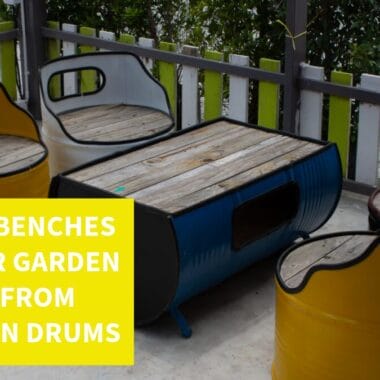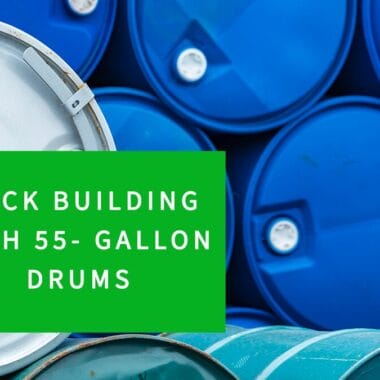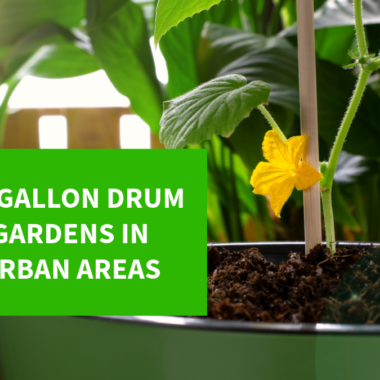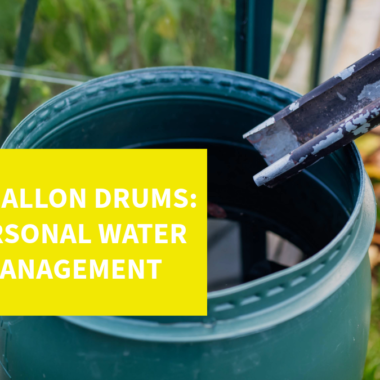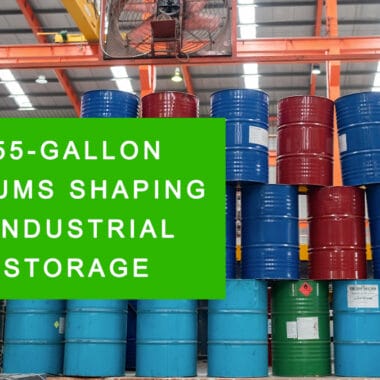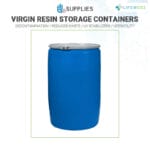55-gallon drums continue to be recycled and repurposed in warehousing, the creative industry, and waste reduction practices. These versatile containers offer much potential for promoting sustainability and creativity in the backyard and garden with composting.
What is Composting?
Composting is collecting organic waste materials and turning them into nutrient-rich soil, also known as compost. Organic waste can include bacteria, fungi, and other microorganisms with the assistance of moisture and air. Composting is an excellent eco-friendly practice for combating climate change and supporting healthier plant growth in the backyard, inside the home, and businesses.
Outside of the sustainable and creative elements, there are many benefits of composting with organic waste and materials, including:
- Preventing soil erosion
- Improving soil health
- Reducing landfill waste
- Protecting the climate
- Supporting healthier plant growth
- Conserving water
- Reduces greenhouse gases
- Lowers project maintenance costs
Utilizing 55-gallon drums for composting is effective and sustainable for accumulating and decomposing these organic materials into compost.
How to Create A Compost Bin from 55-Gallon Drums
One of the many innovative ways 55-gallon drums can be repurposed is for compost bins in the garden. These drums collect organic waste to decompose into compost materials, promoting sustainability in homes and businesses. If you’re considering turning a 55-gallon drum into a compost bin, let’s take a look at this step-by-step guide:
1. Preparing Your 55-gallon Drum
55-gallon drums store and transport hazardous and non-hazardous materials, so correctly cleaning them before repurposing is significant. Part of preparing your drum for composting is thoroughly cleaning it to remove any harmful residues. The next step is creating aeration holes in your 55-gallon drum for air circulation. To create a functional compost bin, there should be a 1/2-inch hole drilled in the drum’s sides, bottom, and lid.
2. Creating an Access Point
Adding an access point to your compost bin requires a top-loading design or a door on the side of your 55-gallon drum. A top-loading design requires an easily removable lid that can be securely closed. Adding a side door to your compost bin allows easier access for the drum to turn or remove the finished compost. This door can be securely added and attached with hinges and a secure latch.
3. Building the Stand for Your Compost Bin
When building the stand for your compost bin with a 55-gallon drum, ensure that the stand lifts the drum off the ground, allowing it to rotate. You can create the stand with lumber or metal pipes as long as it is sturdy enough to hold the weight of the drum. Mount the drum on your stand to rotate your compost bin easily. To design a rotating stand, the compost bin can be set on rollers or with a metal rod or pipe through the center of the 55-gallon drum.
4. Setting Up Your Compost System
Setting up your compost bin requires a convenient location that will allow your compost to thrive. Once your compost bin is in a leveled spot, begin adding the organic waste, such as carbon-rich and nitrogen-rich materials. Filling your bin with these materials can include dried leaves, shredded paper, coffee grounds, and grass clippings. Your compost should remain moist and rotated regularly to aerate it.
5. Monitor the Progress and Harvest
Lastly, regularly monitor your compost bin to determine when it’s ready. The signs that your compost is ready to harvest are that it will have an earthy smell and be dark and crumbly. The composting process can last anywhere from a couple of months to a year, depending on factors like temperature, the materials used, and how often the compost bin is rotated. When your compost is ready to harvest, it can enrich soil, promote plant growth, and improve soil structure in the garden.
Transforming 55-gallon drums into compost bins is an eco-friendly project that benefits your backyard and the environment. Composting with drums repurposes organic materials, reduces landfill waste, and creates a sustainable cycle in your garden.
The Benefits of Composting with Drums
Composting with 55-gallon drums offers many benefits outside the creative and sustainable aspects. Repurposing drums into composting bins is cost-effective and versatile, provides pest and odor control, and efficiently uses space.
The vertical size of 55-gallon drums can easily fit into small backyard spaces, patios, and urban gardens. Tumbling or rotating compost bins also promote a faster decomposition process. Rotating bins allow the compost mix to aerate more effectively than a stationary drum. Since drums are enclosed bins, this helps to preserve higher temperatures in the compost, facilitating the breakdown of organic materials. The sustainability aspect of repurposing 55-gallon drums for composting bins not only recycles waste materials but also reduces landfill waste. Composting organic waste reduces the garbage sent to landfills, reducing greenhouse gases.
The containment of 55-gallon drums as compost systems helps prevent insects, rodents, and other pests from entering the compost. The versatility of 55-gallon drums is functional for compost bins and creative furniture, solar water heaters, garden planters, and rainwater collection systems.
Promoting sustainable practices in the garden and backyard is cost-effective by repurposing 55-gallon drums. Recycling drums for composting is inexpensive, especially when acquiring them from recycling centers. Taking care of a composting system out of 55-gallon drums further promotes DIY opportunities for environmentally friendly practices.
Composting with 55-gallon drums further supports waste reduction, soil health, water preservation, and combatting climate change.
References:
- U.S. Department of Agriculture. Composting.
- US Composting Council. Benefits of Compost.




